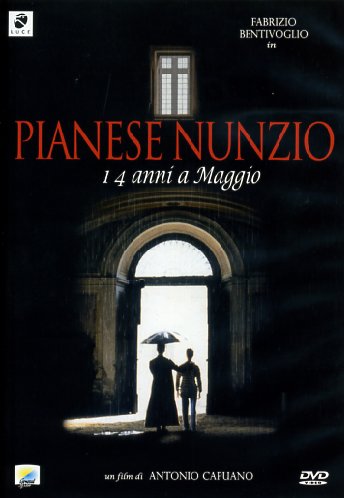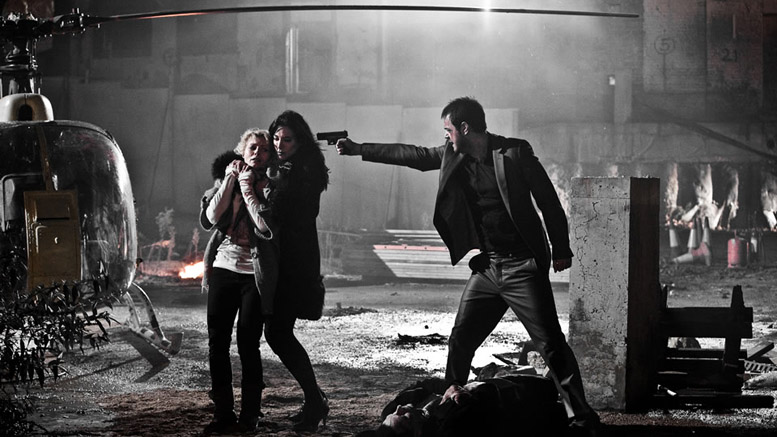
Aka Pianese Nunzio 14 anni a maggio
1996
Original running time: 115 mins
Italy
A Gianni Minervini production for A.M.A. Film, Istituto Luce S.P.A. and Gian Mario Feletti for G.M.F. in collaboration with Mediaset
Distributed by Medusa Film
Director: Antonio Capuano
Story & screenplay: Antonio Capuano
Cinematography: Antonio Baldoni {Panoramico, Eastmancolor}
Music: Umberto Guarino
Cast: Fabrizio Bentivoglio (Don Lorenzo Borrelli) Emanuele Gargiulo (Nunzio Pianese) Tonino Taiuti (Antonio Taiuti Cuccarini) Rosaria De Cicco (Aunt Rosaria) Manuela Martinelli (Ada) Teresa Saponangelo (Anna Maria Pica) Nando Triola (Giovanni Pianese, Nunzio’s brother)
Sacred Silence is a 1996 film written and directed by Antonio Capuano. It’s a borderline crime film in that it deals with the Camorra, although it’s more of a character study and modern day tragedy than a traditional poliziotteschi. That said, it also anticipates some of the approach and style of Matteo Garrone’s Gommorah, a similarly neo-realist inspired examination of the criminal organisations that are so tightly bound to Neapolitan society.
Don Lorenzo Borrelli (Fabrizio Bentivoglio) is a well-intentioned priest from Milan who is parachuted into a new job as custodian of the Santa Maria delle Monteverginelle church in Naples. It’s a prestigious posting, and he starts his job with fervour, making a particular name for himself by actively campaigning against the Camorra despite the considerable danger to himself that this could entail. He also forms a particularly strong bond with the young men of the neighbourhood, trying to prevent them from falling into a life of crime by encouraging them to learn and openly express themselves during his confirmation classes. In fact, his relationship with them is perhaps too free and easy: rumours begin to circulate that he has a sexual interest in his charges, and most particularly in the 13 year old organist and wannabe crooner Nunzio (Emanuele Gargiulo).
Eventually social workers and the police become involved, much to the delight of the local Camorra bosses who see it as a perfect opportunity to rid themselves of the meddlesome priest. They set about leaning on Nunzio to condemn him, but Nunzio has his own reasons to resist: quite apart from the love he feels for Lorenzo, he also rightly blames the Camorra for the death of his girlfriend, an accidental victim of a shooting in the subway.

This is an amazingly courageous film, considering the fact that it’s essentially about a paedophile and, what’s more, a paedophile who is in many other ways so upstanding and heroic. Lorenzo certainly makes for a difficult protagonist, at the same part admirable and despicable; and the fact is that he takes advantage of a vulnerable young man in much the same way as the Camorra he so despises. But he’s a genuinely tragic protagonist, someone who tries to do good but fails because of fatal character flaw which not only undermines his cause but also his whole moral bearing.
Since his 1991 debut Vito and the Others Capuano has made a series of controversial, interesting films set in his native Naples, which generally deal with the Mafia, poverty, social deprivation and self doubt. He’s one of the few contemporary Italian directors whose work is consistently impressive; markedly influenced by the likes of Rossellini and De Sica but also with a good eye for a dramatic story. Here he uses plenty of straight to camera monologues to develop the narrative – a gimmicky tactic I’m not keen on, in general – and favours an understated, constrained style. He’s also very careful in his use of music, which ranges from Neapolitan torch songs to locally flavoured contemporary pop, and although his staging of some of the more choreographed sequences isn’t great he does manage to keep things moving at a modest pace.
What’s particularly impressive, though, is his depiction of Naples, which comes across as much like a North African as a Southern European city, full of noise and bustle, machismo and camaraderie. The characters are drawn from the same backdrop as Matteo Garrone’s Gomorrah, kids from the tenements and tower blocks who spend their time in arcades or doing drugs, who end up drifting into street crime and gangs in order to make a quick buck and because it’s what people like them do. Shootings can happen at any time, so much so that people treat it as a matter of daily life, even when innocent people are the victims, and the Camorra is both untouchable and involved in just about every element of life
As a bonus, poliziotteschi fans might notice Tommasso Palladino, a veteran of several Umberto Lenzi films from the 70s, in a small role as a Camorra boss at a dogfight.
Here’s the trailer:
